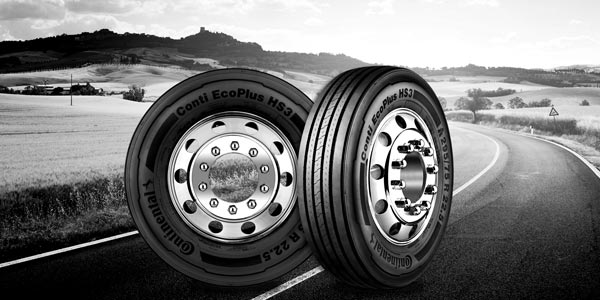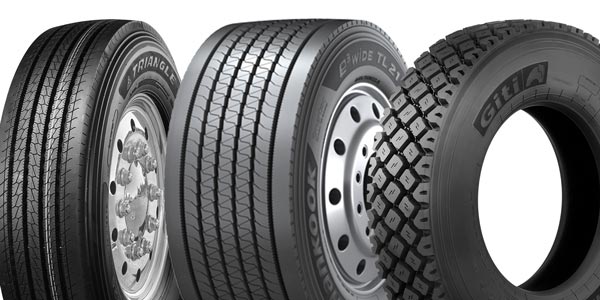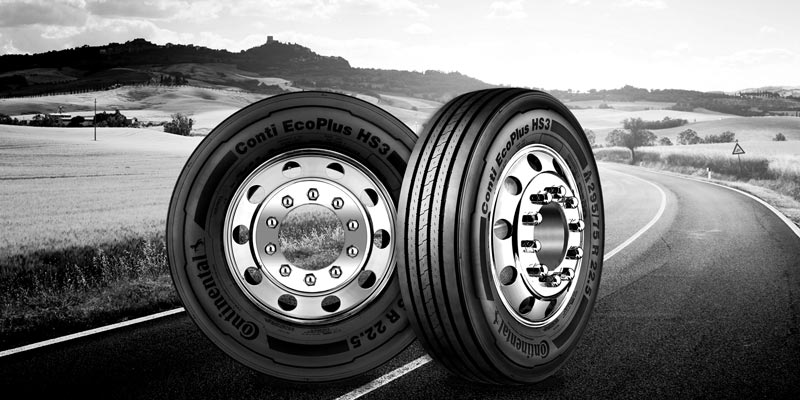
Tires are increasingly being made to fit specific applications, and fleet managers should take notice when spec’ing new tires––there’s a lot to take in.
Matthew Hanchana, sales technical service senior manager for Giti Tire (USA), says that advances being made by tire companies are resulting in the development of tires for very specific applications.
This is good news for fleets with specialized applications or those who want to squeeze more efficiency out of their truck tires, but it does mean that you will have to do more research before choosing a truck tire to make sure the application matches the tire.
“For example,” Hanchana says, “a mixed-service type of tire typically has a cut/chip compound which offers resistance to the rough terrain it mainly travels on. That will not serve well for an application that is mainly highway, where tread life is more valued.
“But it gets much more granular,” he goes on, going through a list of questions the fleet needs to ask itself: “What percentage of the time is the tire going off road and what type of off-road conditions is it facing? Is it on a vehicle hauling grain out of a farm and dealing with sticky mud? Or is it dealing with sharp rocks on an aggregates site, or nasty metal objects on a construction site? Will the tire be operating almost exclusively on the open highway, or also spending time in the city with tight turns and damaging curbs?”
According to Charles Luther, northeast sales manager for Triangle Tire USA, the current last-mile delivery boom has changed tire needs, and tire manufacturers are responding by designing products with this trend in mind.
“Tire manufacturers such as Triangle Tire are putting increased efforts into designing tires for regional and local haul fleets. 17.5-, 19.5-, 9R22.5-, and 10R22.5-in. size tires (in both rib and traction tread designs) for smaller delivery vehicles are being developed to offer more miles, better fuel economy and repeated retreadability,” Luther says.

Rolling resistance and fuel efficiency
One such example of an application-specific tire innovation is low rolling resistance (LRR) tires, which have become a popular source of improved fuel economy in many long-haul fleets.
Studying the topic in 2015, the North American Council for Freight Efficiency concluded:
“Low rolling resistance dual tires save significant fuel. The purchase price of LRR tires may be higher than non-LRR tires, but these costs can be offset through fuel savings when considering total life-cycle costs. Adoption rates of LRR tires in over-the-road trucking are high and will continue to increase. Along with even lower rolling resistance tires, purchase price and traction are being improved with new tire development and availability.”
That was in 2015, and according to Marco Rabe, Continental’s head of truck tire technology in the Americas region, LRR tires have only improved since then.
“We continue to make technological leaps in tire design and rubber compounding. There is what we call a ‘target conflict’ between mileage and rolling resistance, where improving one characteristic reduces performance in the other area,” he says. “However, with such advanced compounding knowledge, Continental is able to really minimize the trade-off. When we design a tire, we focus on delivering the lowest overall driving cost for a fleet in that specific application.
“When considering which low rolling resistance tire to choose, fleets should do their research to understand whether the manufacturer is able to deliver performance through compound improvements, or whether they are relying on sacrificing performance in other areas, such as tread depth or casing weight,” he recommends. “If they choose a premium tire, there shouldn’t be a large impact on mileage, as long as the tire and vehicle are being properly maintained.”
Rabe says that maintaining proper air pressure is key to getting the best fuel efficiency, but it also helps eliminate irregular wear and other tire conditions. Another factor that can eliminate early removal of a tire is keeping the vehicle properly aligned, he adds, as well as generally avoiding irregular wear with good maintenance practices.
Rob Williams, senior director of TBR sales for Hankook Tire America, shares an example of an improvement his company has made in the tire production process to provide improved rolling resistance and fuel economy. Hankook calls its new process Smartec.
He gives an example: “The newly-launched e3Wide TL21 perfectly embodies this new system as it applies to the development of a trailer position product with superior long-haul performance characteristics in mind,” Williams says. “Equipped with Hankook Tire’s new Spiral-Coil technology and structure, the e3Wide TL21 provides a more stabilized footprint and casing durability correlating to a longer lifetime of the tire. Extending that lifetime is the tire’s optimized bead profile allowing for an easier retreading process.
“As an added economic benefit, the tread structure features a closed shoulder design helping to reduce irregular wear while increasing fuel efficiency and maximizing potential mileage,” he adds. “Six main grooves with strengthened shoulder ribs provide additional structure, to reduce deformation and increase fuel efficiency. Additional TBR technology and innovation can be found in the Tridimensional siping, where interlocking blocks work to increase traction performance on the road and in adverse conditions. Lastly, when compared to dual configurations, super singles like the e3Wide TL21 offer significant weight savings, up to 400 lbs. per tractor, while reducing rolling resistance by 33%.”
Both the NACFE report and Continental’s Rabe note that LRR tires will only provide benefits in certain applications.
“Rolling resistance matters in every segment, because every vehicle has gas mileage,” Rabe says. “However, using a low rolling resistance tire has a bigger effect in long haul and regional applications, for two reasons: the vehicles are typically traveling more miles, and also typically traveling at higher speeds. Higher speeds generate more heat, which increases fuel consumption.”
Rabe notes that long-haul fleets are typically associated with LRR tires, but that regional-haul fleets can also see significant benefits.
“Construction and off-road tires generally have other condition factors that outweigh rolling resistance in the design process, such as durability and traction,” he notes. “In those applications, the robustness and retreadability of the tire tends to outweigh the need or benefit of fuel efficiency.”
For more on this topic, check out Understanding the truck tire compounding process.













